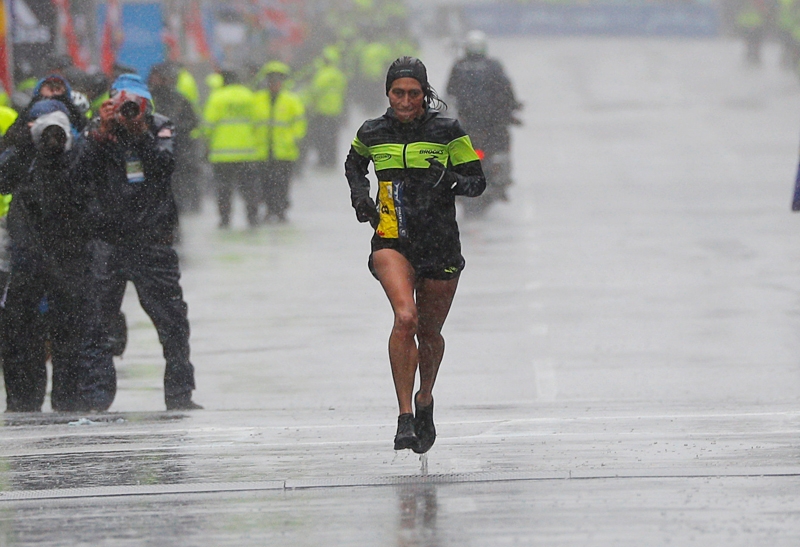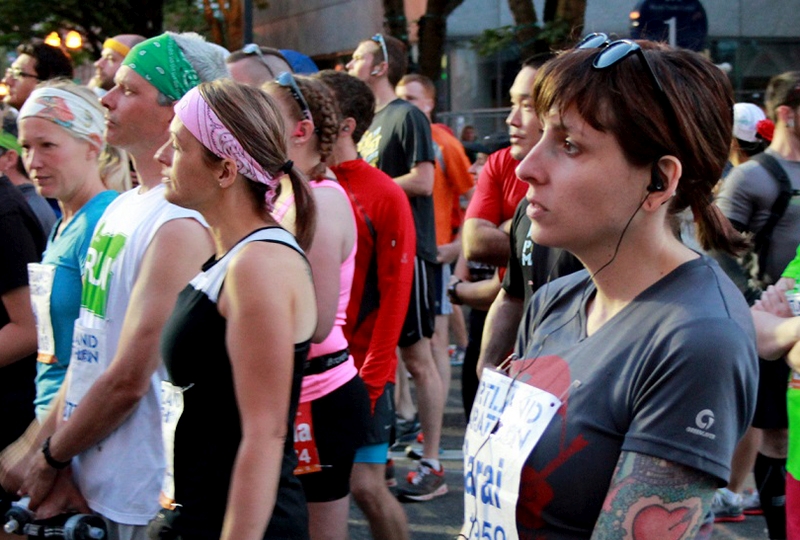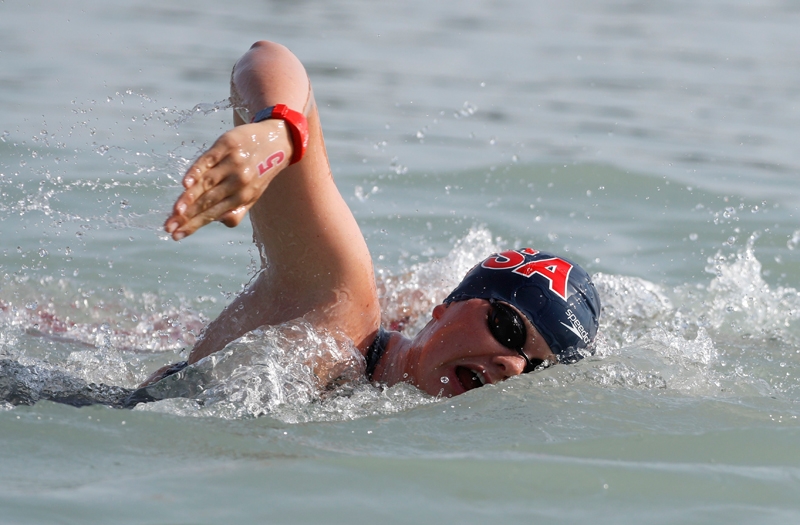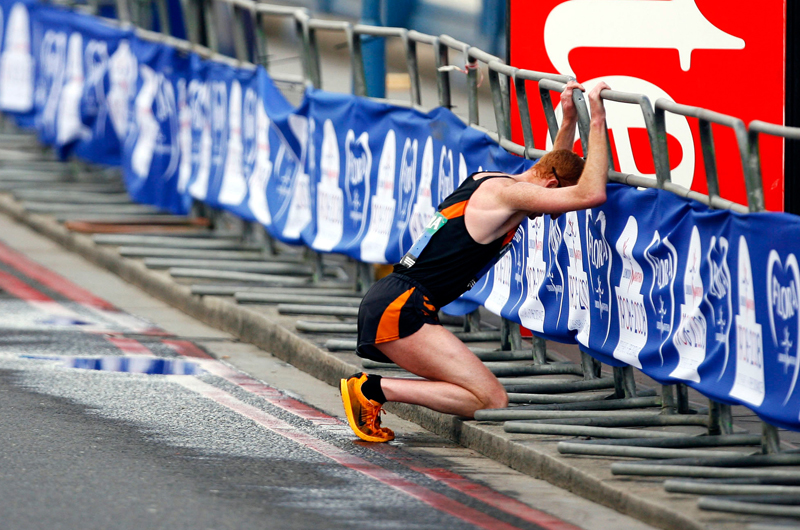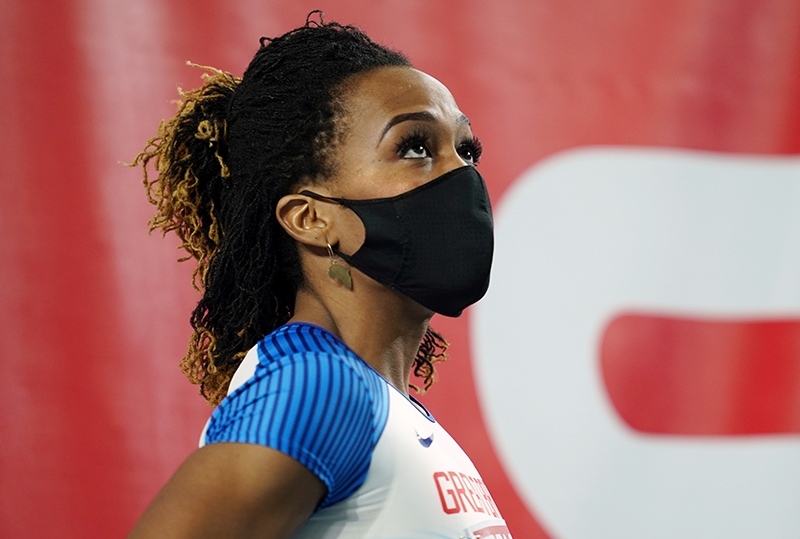You are viewing 1 of your 1 free articles. For unlimited access take a risk-free trial
Eustress or You Stress: is there positive stress in sport?

Professor Costas Karageorghis and David-Lee Priest explore the anxiety-performance relationship and how its management impacts sporting contests
Sport psychologists often speak in terms of ‘activation’ which is an athlete’s state of readiness to respond to any demand that might be placed upon them. Activation can be heightened by the presence of an audience, verbal stimulation, or exposure to the competitive environment and can be interpreted in either a positive (“it’s exciting to get into the final”) or negative (“we’re anxious because we’ve not beaten them for two years”) way by athletes.Contemporary anxiety theories, such as that of Prof Graham Jones(1), distinguish between bodily-related’ and ‘thought-related’ anxiety, as well as acknowledging that there is an interpretational element in one’s perception of anxiety. For example, a sprinter on the blocks might feel the butterflies doing barrel rolls in her stomach, but at the same time have an almost complete absence of anxious thoughts. We would also like to introduce a pertinent concept from outside sport psychology: The term ‘eustress’ was coined by Canadian psychologist Dr Hans Seyle to refer to positive or ‘adaptive stress’ which helps us during demanding events and passages in our lives. In other words, stress that is functional and thus serves a purpose.
Two aspects of Jones’s model mirror the messages that are preached by motivational experts in the business and financial worlds (eg Jack Canfield, author of The Success Principles); namely the importance of positive expectations in bringing about a desired result and the practice of acting ‘as if’, which is an essential precursor to success. For example, how would you carry yourself, interact with others and organize your time if you were already the champion that you are aiming to become? Many of the world’s most prolific sporting heroes began with a predilection of greatness: Muhammad Ali being the easiest to identify: “I called myself the greatest even before I knew I was.”
Trait anxiety
There are inherent dangers in sporting competition allied with failing to meet our own expectations, and those of others. Research has shown that these fears, both real and imagined, manifest themselves to a greater extent in some athletes than others, thus forming a stable trait or disposition that can be measured(2). There is an adaptive reason for this; it suits an evolutionary purpose for some members of a social group to be “on edge” – they have to be in order to survive, whereas dominant members can afford to be more relaxed. The knowledge that the way we experience anxiety is a personal variable has clear implications for practitioners who work with individual athletes. Those working in a team environment may also be able to identify members of a squad whose negative interpretation of events may be affecting others.It is worth bearing in mind that trait anxiety is linked to other personality dimensions such as sensation seeking(3) and introversion-extraversion(4). Those who seek sensations, in the form of excitement and variety, are far less likely to experience debilitating anxiety. In fact, the ‘thrill’ of high activation may prove to be a strong motivating factor for them.
In every team unit, it is possible to identify a spectrum of introverts and extroverts. For example, in the many track and field teams we have worked with, the sprinters are often outgoing and gregarious by nature and the distance runners generally coy and prone to nervous tension. The same may be true across certain playing positions in team sports; for example, consider the steely, somewhat solitary character often ascribed to the football goalkeeper compared to his outfield counterparts.
A squad or team is a collective of individuals who are essentially quite similar (they all play the same game), yet different in many ways. For this reason, a ‘vitamin model’ that entails prescribing a specific intervention across the board (eg meditation) expecting the same results for each group member is essentially a flawed one.
Managers who recognize individual differences can be seen in action at the highest level: consider the individualized style of either Sir Bobby Robson or Jack Charlton OBE, both of whom proved highly successful in international soccer, pitted against the autocratic demeanor of a manager such as Fabio Capello, who has proved far more successful at club than international level.
Self-confidence
According to Prof Graham Jones, self-confidence is the antithesis of thought-related anxiety. And, as they always say in those old American gangster movies, “my enemy’s enemy is my friend”. So rather than focusing on the sensations of anxiety, which is a self-perpetuating activity, seek to replace self-doubt with positive reinforcement.The first author’s work with leading athletes has demonstrated that in the competitive arena, reactions to events are polarized; you’re either confident of your ability to cope with the demands of the task at hand or you’re not - there isn’t much of a middle ground. This is why you must display confidence in your own confidence.
The penalty shoot-out serves as the pinnacle of sporting anxiety. The 2010 soccer World Cup in South Africa gave us plentiful examples of this dramatic dénouement to a sporting contest - Uruguay’s sensational win over Ghana being one that was memorable. In a penalty shoot-out, each player is isolated in a gladiatorial fashion. The stakes are extremely high. There is immense social pressure and a tantalizing escalation of tension: the perfect breeding ground for anxiety! We have all seen players whose body language revealed their inner lack of confidence: remember Roberto Baggio’s dropped head and horrendous punt, the last kick of USA 94? It may still be travelling!
In a penalty competition bodily anxiety is extremely high so there can be no middle ground: you’re either confident, and therefore thinking about how you’re going to score, or wracked with thought-related anxiety and fixating on how you might miss and what that would mean. The closed skill involved is so simple yet it’s the psychological (ie self-imposed) pressure of the moment that separates the men from the boys.
According to a study by researchers based at Hull University(5), confidence in one’s own ability may play a key role in the relationship between anxiety and sports performance. While pre-performance measures of thought-related and bodily anxiety did not influence athletes’ subjective ratings of their own performances, high ratings of self-confidence and coping predicted low anxiety. For this reason, interventions such as positive self-talk and thought replacement may be particularly helpful to athletes.
Social aspects of anxiety
Social evaluation is a large component of anxiety for many athletes. A great example we recall was that of the guy who quit his day job, practiced darts in his garage for 12 months and built up to throwing 100+ averages. Of course, when he tried to qualify for elite PDC tournaments his game fell apart, so much so that he almost became a danger to bystanders. He wasn’t used to playing in a social environment and being subjected to such close scrutiny. This example teaches us two important things. First, athletes should be exposed to the sort of social (sometimes hostile) atmosphere of competition in their training. Second, don’t quit your day job!Competitive and training environments have their own social dynamics with unique challenges. Indeed, for some athletes the key to controlling anxiety might lie in their relationship with others in the training group. A good example is that of jump jockeys: because of the inherent danger of their sport, there is an especially high degree of camaraderie among them. This may be functional in controlling their understandable anxiety.
In flat racing, which is far less dangerous, the jockeys are noticeably cooler and more distant in their personal relations with each other(6). Work from outside sport psychology has also taught us that anxiety has a knock-on effect on mental judgement, and can lead people to interpret neutral stimuli as being threatening in nature(7); a symptom of anxiety you may be able to spot among your charges or team-mates.
Catastrophe theory
A momentous development in the annals of sports anxiety research came at the hands of Prof Lew Hardy and his associates at the University of Bangor who developed the cusp catastrophe theory which details the influence of anxiety on athletic performance(8). Using an intriguing mathematical model, they demonstrated that anxiety is a dynamic process (which unfolds over time), and that decrements in performance caused by anxiety are not necessarily gradual or continuous but may be subject to a dramatic nosedive. Essentially, when thought-related anxiety is high, increases in bodily anxiety lead to the nosedive in performance (see Figure 1).England’s exit from the 2010 World Cup fits this description: a domino-like fall from grace in which the national side twice conceded a brace of goals in quick succession. Hardy’s work emphasizes that catastrophes can be averted and managed by reducing bodily anxiety (relaxation) and boosting self-confidence, both of which offset a sudden collapse.
Figure 1: Catastrophe theory predictions of performance

Catastrophe theory predictions of performance under conditions of high and low thought-related anxiety.
Choking under pressure is a phenomenon allied to the ‘catastrophe’, and a recent review emanating from no less a place than Gloucester pinpointed several interventions aimed at reducing its occurrence(9). Chief amongst these was the approach of learning by analogy (see table 1) rather than by a series of explicit rules which are consciously referred to by the athlete and can therefore be displaced in situations of high anxiety. Another proven intervention strategy is the use of a pre-competitive routine which allows the athlete to switch off from potential distractions in order to focus squarely on their decision-making processes.
Table 1: Learning by analogy examples
Sport Analogy
Tennis Hit backhand like throwing a FrisbeeGolf Accelerate through the hitting zone like a rollercoaster on a dip
Basketball Follow your free throw into the basket like casting a fishing line
Football When you jump for a header load your thighs like springs
Lawn bowls Swing your arm through like a pendulum to release the wood
Cricket When seam bowling let your arm follow-through like the sail on a windmill
Snooker Take the cue through straight like a piston
Javelin Release the javelin like you’re cracking a whip
Behavioral interventions
A piece of research carried out recently at Brunel University showed that short-term interventions (less than 7 minutes) delivered prior to performance can reduce thought- and bodily-related anxiety in athletes(10). This study tested the matching hypothesis, which states that interventions should be matched to the type of anxiety that an individual athlete usually experiences (eg thought-related vs. bodily anxiety). In a nutshell, thought-related interventions reduced both thought-related and bodily anxiety as did bodily ones so the matching hypothesis was somewhat disproved. However, we maintain that matched interventions may prove effective over a longer period of time (eg several weeks).What brief interventions did we use to good effect? ‘The Quiet Place Technique’ entails envisioning yourself in a location of ideal tranquility and attending to various sensory aspects of this. The second intervention was a shortened form of Benson’s ‘Progressive Muscular Relaxation’, which involves sitting comfortably, closing your eyes, focusing attention on the mechanics of your breathing, then tensing and relaxing each muscle group of your body in turn.
Finally, ever wondered why Sir Alex Fergusson was such a prolific chewer of gum? Research from Cardiff University(11) suggested that the canny Scot was actually administering a behavioral intervention on himself! Chewing gum improves alertness, instills positive feeling states, quickens reactions times and heightens selective attention.
So, can stress be beneficial?
Former British athlete and javelin world record holder, Steve Backley, was adamant that the stress of competition improved his performance by at least 10%, and said, “I never think of stress as a negative thing... I think that as soon as you admit to stress being a negative factor then it will be”. This quote underlines the essential ingredient of interpretation in the stress-response during competition; ostensibly Backley is a strong advocate of the eustress notion.Stress, anxiety and competition at the highest level are synonymous; like walking in the rain and getting wet - you cannot do one without expecting the other. Angel Cabrera, the 2009 US Masters golf champion, said of the three-way playoff that decided the title “at this stage of the tournament, anyone who says they are not nervous isn’t human”. Billie Jean King, that grass-court great, went a step further in suggesting that stress is an indirect marker of success: “pressure is a privilege”.
Practical advice for athletes
- Self-confidence plays an important role in banishing competitive anxiety so take a tip from sporting greats and remember to act “as if”.
- Be mindful of the fact that anxiety has a genetic basis and therefore some athletes are more prone to feeling anxious than others; it’s how they deal with their anxiety symptoms that is the telling factor.
- Replicating the social environment of competition as closely as possibly in training is a good way by which athletes can develop appropriate anxiety-control techniques.
- There are several potent techniques that allow athletes to manage anxiety that include ‘The Quiet Place Technique’, ‘Progressive Muscular Relaxation’ and learning skills through analogy (see Table 1).
- Parfitt G, Jones G and Hardy L, Multidimensional anxiety and performance (43-80), in Jones G and Hardy L (Editors), Stress and Performance in Sport, John Wiley and Sons 1990
- Jnl Mot Beh 1971; 3: 151-179.
- Int Jnl Psychophys 2007; 63(1): 16-24.
- Jnl Res Person; 2007; 41(3): 558-78.
- Eur Jnl Sp Sci 2010; 10(2): 97-102.
- Fox K, The Racing Tribe: Watching the Horsewatchers, Metro Books 1999.
- Psychophys 2010; 47(2). 271-80.
- Hardy C and Fazey J (1987) The Inverted-U Hypothesis: A Catastrophe For Sport Psychology? Paper presented at the Annual Conference of the North American Society for the Psychology of Sport and Physical Activity. Vancouver. June.
- Int Review Sp Ex Psych; 3(1): 24-39.
- Eur Jnl Sp Sci 2010; 10(3): 209-21.
- Nutr Neurosci 2010; 13(1): 7-16.
Related Files
Newsletter Sign Up
Testimonials
Dr. Alexandra Fandetti-Robin, Back & Body Chiropractic
Elspeth Cowell MSCh DpodM SRCh HCPC reg
William Hunter, Nuffield Health
Newsletter Sign Up
Coaches Testimonials
Dr. Alexandra Fandetti-Robin, Back & Body Chiropractic
Elspeth Cowell MSCh DpodM SRCh HCPC reg
William Hunter, Nuffield Health
Keep up with latest sports science research and apply it to maximize performance
Today you have the chance to join a group of athletes, and sports coaches/trainers who all have something special in common...
They use the latest research to improve performance for themselves and their clients - both athletes and sports teams - with help from global specialists in the fields of sports science, sports medicine and sports psychology.
They do this by reading Sports Performance Bulletin, an easy-to-digest but serious-minded journal dedicated to high performance sports. SPB offers a wealth of information and insight into the latest research, in an easily-accessible and understood format, along with a wealth of practical recommendations.
*includes 3 coaching manuals
Get Inspired
All the latest techniques and approaches
Sports Performance Bulletin helps dedicated endurance athletes improve their performance. Sense-checking the latest sports science research, and sourcing evidence and case studies to support findings, Sports Performance Bulletin turns proven insights into easily digestible practical advice. Supporting athletes, coaches and professionals who wish to ensure their guidance and programmes are kept right up to date and based on credible science.
